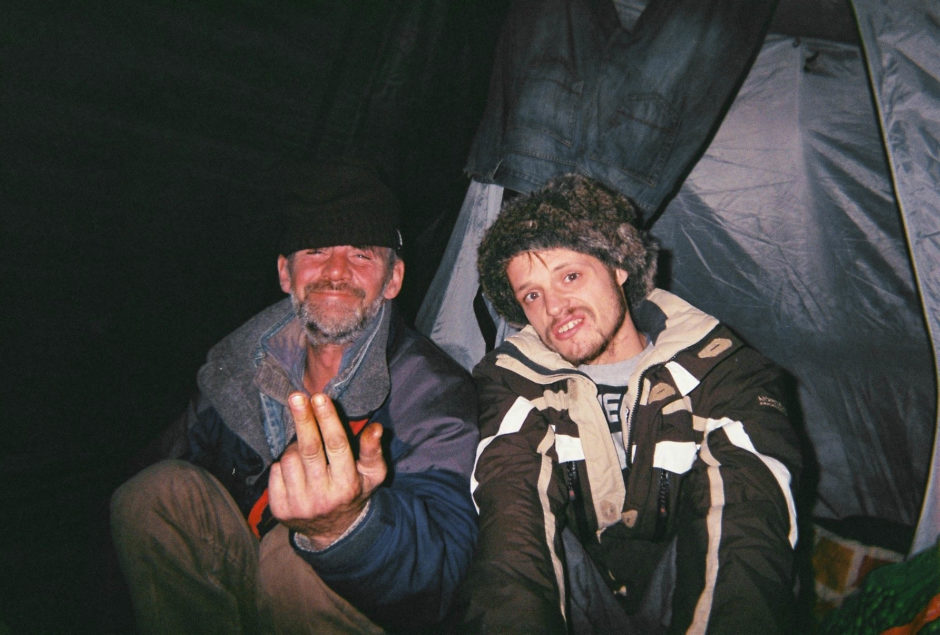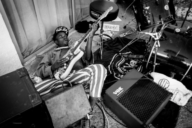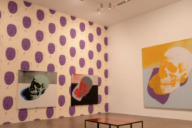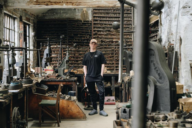A new exhibition launching at ‘Out of Darkness’ Wolverhampton Art Gallery aims to shed light, raise awareness and change perceptions on the growing population of homeless people in the city.
Wherever you live it is hard to ignore the steep rise in homelessness on our streets and after reading a harrowing story in Wolverhampton’s Express & Star last year, about a rough sleeper who had passed away in a stairwell in the city, University of Wolverhampton oral historian Greig Campbell felt compelled to act.
“There was a death of a girl called Hayley and they found the body on Queen Street. Apparently her body had been there for a number of hours.” Comments Greig. “I was horrified by that.”
While Greig now lives in Liverpool his PHD study on Bilston Steel Works brings him to the city every month. “Obviously homelessness is becoming a more prolific problem on the streets of Wolverhampton. It is quite visible and every time I come back there are more people outside the bus and train station.”
Greig decided to approach Wolverhampton Homeless Outreach and do some research they hoped would make a difference to change people’s perception.
“I went down to the night shelter and what I realised is that they are constantly fighting fires; they are doing frontline stuff almost making up for the shortcomings and lack of long-term investment from the council.”
Greig and the team at WHO applied for an award from Creative Black Country to support a project that they hoped would go some way to change views and give people a platform to have conversations about the subject.
He enlisted the help of photographer and producer Laura Dicken. They were keen to have an inclusive approach to the project with the five participants that took part through the charity. Rather than taking a voyeuristic view following the individuals around with cameras they adopted a different approach. Each participant was invited to a skills session on photography and given a pack containing examples of landscape, portraiture and documentary photography.
“I delivered a workshop with the participants going through different types of visual storytelling and gave them some tools and skills that they could then use to decide how they wanted to tell their own stories.” says Laura.
Armed with a set of disposable cameras it was up to participants to tell the story of their day-to-day life as they chose; giving them a voice. “People pass by on their way to work or shopping and they don’t even think about the homeless person they see but I hope the photographs, stories and interviews will get people talking about it.”
Through arranged meeting times the group then had feedback sessions with their newly developed photos. “Some of them have gone down the documentary style taking pictures of their friends, the community around them, support mechanisms and drinking buddies on the streets.” Comments Laura.
However it was one particular participant that really stood out.
“He is the closest you would find to a ‘romantic vagabond’,” says Greig. “He doesn’t live in the city centre like the others. He comes in to town for a job that gets him a bit of food and money and then he goes back to his tent. He takes photos of landscapes, wildlife and forests. We were expecting the images to be very gritty; a narrative of drug use maybe, but he adds a balance. It could have all been very hardcore.”
Living rough for seven years P sleeps by the canal in Tettenhall, “It’s nice. There’s a lot of animals, I love wildlife. There’s a family of badgers come around at night and I leave them something to eat. They come around nearly every night and if I’m lucky they’ll bring their little ones with them as well.” He told Greig in one of his interviews.
“Some people just categorise you. If you’re homeless you must be on drugs or an alcoholic. They don’t treat you very nice.I think that’s the hardest. Especially when you try and talk to them and they just don’t want to now.”
The group’s images proved such good quality that they have been chosen for an exhibition at Wolverhampton Art Gallery, just metres away from where one of the participants sleeping. “When we told one of the participants that we’d be exhibiting at the Art Gallery he told us that he often sleeps in the stairwell, right next to the room where their work will be exhibited to the public. That is pretty incredible.”
The exhibition will take place in the gallery’s old staff room which is covered in wallpaper and has a homely feel. An irony not lost on Greig and Laura. “It is an interesting juxtaposition. There’s a fireplace, a display cabinet, little tables and chairs, so it is almost like a post 1960’s living room and we are going to treat it as such. Normally in a living room you’d have photos of family and school photos but this will have the juxtaposition of people who don’t have a home. This is a romanticised version of a home, perhaps a home they want, used to have and lost or dream of.”
While on the periphery of society this self documentary project offers the opportunity to get a glimpse in to the difficult and harsh world of living on the streets.









